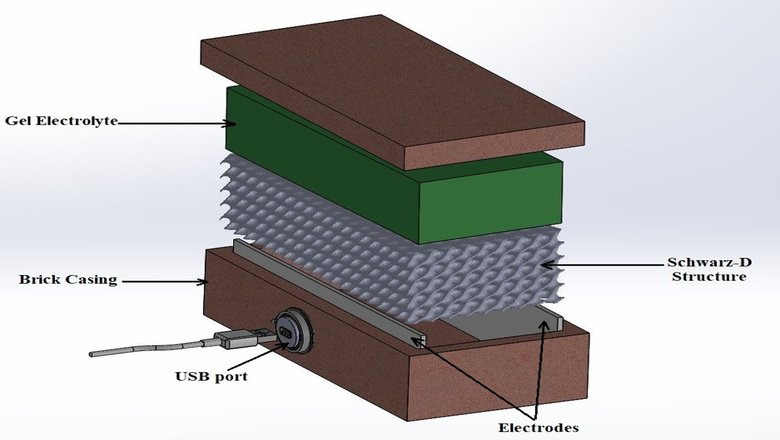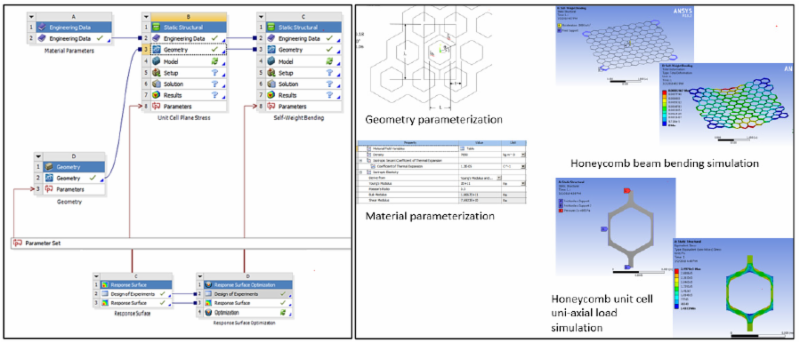Microsoft Community Pitch-Off: Turning Plastic Waste Into Educational Supplies with 3D Printing
 People across the globe are harnessing the power of new technologies in a search for sustainable, low-cost, and localized solutions to life that will eventually deal with some of Earth’s most imminent problems, like pandemics, global warming, and plastics contamination. Particularly concerned about the future of sustainable education, three Arizona State University (ASU) students won $6,000 in startup funds for their new circular economy project through the Microsoft Community Impact Pitch-Off in late November. Hoping to meet the needs of underserved high school students in the Phoenix metro area, Brian Boyle, Matthew Burmeister and Andrew John De Los Santos (three master’s students from the School of Sustainability) created The Circular Classroom. It is an embodiment of their belief that technology could help transform hard-to-recycle plastic waste into low-cost 3D printed educational materials. Additionally, the project truly touches on all three pillars of sustainability: environmental, economic and social.
People across the globe are harnessing the power of new technologies in a search for sustainable, low-cost, and localized solutions to life that will eventually deal with some of Earth’s most imminent problems, like pandemics, global warming, and plastics contamination. Particularly concerned about the future of sustainable education, three Arizona State University (ASU) students won $6,000 in startup funds for their new circular economy project through the Microsoft Community Impact Pitch-Off in late November. Hoping to meet the needs of underserved high school students in the Phoenix metro area, Brian Boyle, Matthew Burmeister and Andrew John De Los Santos (three master’s students from the School of Sustainability) created The Circular Classroom. It is an embodiment of their belief that technology could help transform hard-to-recycle plastic waste into low-cost 3D printed educational materials. Additionally, the project truly touches on all three pillars of sustainability: environmental, economic and social.
According to the trio, the Circular Classroom aims to address a myriad of community needs in the Phoenix area, where many local high schools suffer from a lack of funding, which creates barriers to technology and learning opportunities. Meanwhile, schools and society at large are creating plastic waste streams that are not easily recyclable. For example, they were concerned with plastic bottle caps made out of polypropylene which does not biodegrade, meaning it would take hundreds of years for them to decompose in a landfill, and if not recycled, these caps can turn up in the water and pose a danger to marine life because of their small size. In the United States, 2.5 million plastic bottles are thrown away every hour, and each one of them has a cap on, which is another reason why this project is so important.
The winners of the challenge claim that now students will have the opportunity to be introduced to a circular economy model where they can produce 3D printing educational materials from what would otherwise be a plastic waste. In doing so, it generates an opportunity to increase high school graduation rates by keeping students engaged in classrooms, reduce the school budget on 3D printing filament by providing them with the technology to generate their own filament from plastic waste, and build capacity which can create pathways to employment or higher education by training students on Computer-Aided Design (CAD).
“Our excitement and motivation for The Circular Classroom stems from the opportunity to introduce a circular economy education model into local high schools,” said Boyle, who is pursuing a Masters degree on Sustainability Solutions at ASU. “We are unaware of schools currently providing this learning opportunity to students, yet feel that it is imperative to give exposure to the next generation and empower students by building capacity to address contemporary challenges surrounding waste. Furthermore, by prioritizing underserved high schools, we aim to provide technological aptitude and learning opportunities for students to persist in high school graduation and beyond.”
They have come up with a process that is fun and simple. First off, they need to collect bottle caps at schools, so they plan to begin by identifying a local high school to establish a partnership, select interested teachers, engage students, and then set up collection sites in the classrooms. Then the plastic waste is transformed into 3D printing filament, and finally, they can 3D print new designs for educational supplies using the new 3D printers that some local high schools have received through a grant.
Boyle, Burmeister and De Los Santos took home $1,000 in prize money and $5,000 in implementation funds to start putting their plan into action. They will use the funds to purchase technology that local high schools can use to shred plastic into plastic flakes and then extrude them into spools for their 3D printers (they are currently considering buying ReDeTec’s Protocycler+). Boyle estimates that with the funding and right high school partnership opportunities, they could implement and pilot for The Circular Classroom in up to two local schools. In addition to Microsoft, the team is partnering with GreenLight Solutions, an organization that will provide ASU student support for training teachers on how to use the shredder/grinder and 3D printer.
The idea originally came from a video of a volunteer-based 3D printing operation using plastic bottle caps in Bali, Indonesia, and from one of the team member’s experiences attending public schools in the Phoenix metro area. Now it has led the three bright minds to become winners of the Microsoft Community Pitch-Off, an event co-sponsored by Microsoft and Net Impact (a nonprofit organization for students and professionals interested in using business skills in support of various social and environmental causes) that gives students the opportunity to propose a solution that addresses a problem in their local community. Both judges from Microsoft and the local community were in charge of evaluating the proposals.
Microsoft is on point with its environmental sustainability efforts and is committed to addressing important challenges for communities where their data centers operate, so through community partnerships, the multinational company creates shared value while also advancing social opportunity, enhancing economic growth, and supporting environmental sustainability. To enter the program, the students had to present their idea for how to best leverage Microsoft’s initiatives and local community priorities to address an important issue in their area.
The platform for this particular education model is based around 3D printing and resource recovery, giving a chance to Microsoft volunteers to provide their technical expertise to students. These volunteers could help mentor students on how to use the 3D CAD software necessary to 3D print. They can also take any collected bottle caps to donate as 3D printing feedstock at the schools. While non-profit Green Light Solutions has undergraduate and graduate consultants that could guide teachers on the operations of the shredder/grinder and 3D printer.
Students don’t only get the chance to explore their local area to assess local challenges or create strategies to address them, this opportunity also gives them a greater understanding of collaborations and local resources, as well as demonstrable experience in taking an idea and turning it into a fully developed project. How would you use 3D printing to help your local community?
[Image credit: ASU, Net Impact and Microsoft]
The post Microsoft Community Pitch-Off: Turning Plastic Waste Into Educational Supplies with 3D Printing appeared first on 3DPrint.com | The Voice of 3D Printing / Additive Manufacturing.
Competitors explore how to create a perfect 3D printed heat sink
Partially 3D Printed Bricks Generate Electricity Through Temperature Changes
 Bricks have been in use as building materials for millennia, but they can do so much more when science and technology are applied. A group of scientists led by King’s College London have developed a thermogalvanic brick that can generate electricity, as long as the two faces of the brick are at different temperatures. This is because of a balanced electrochemical reduction and oxidation processes occurring inside the brick at the two faces. As long as there is a temperature difference between the two faces – if, for example, the outside of a brick structure is hot and sunny but the inside is cool and shaded – the electrochemical reactions will occur and generate electricity. The compounds inside are not consumed, do not run out and cannot be overcharged.
Bricks have been in use as building materials for millennia, but they can do so much more when science and technology are applied. A group of scientists led by King’s College London have developed a thermogalvanic brick that can generate electricity, as long as the two faces of the brick are at different temperatures. This is because of a balanced electrochemical reduction and oxidation processes occurring inside the brick at the two faces. As long as there is a temperature difference between the two faces – if, for example, the outside of a brick structure is hot and sunny but the inside is cool and shaded – the electrochemical reactions will occur and generate electricity. The compounds inside are not consumed, do not run out and cannot be overcharged.
The researchers used gelled water inside the brick and added a 3D printed interior based upon a Schwarz D minimum surface structure. This makes the thermogalvanic bricks stronger than typical bricks, as well as allowing the electrochemical reactions to occur and improving insulation.
The scientists believe that these bricks could be used to provide both shelter and electricity in regions of the world that have limited access to both. The energy the bricks provide is both affordable and sustainable, and the bricks can easily be constructed.
“The idea is that these bricks could be 3D printed from recycled plastic, and be used to quickly and easily make something like a refugee shelter,” said Dr. Leigh Aldous, Senior Lecturer in the Department of Chemistry at King’s College. “By the simple act of keeping the occupants warmer or cooler than their surroundings, electricity will be produced, enough to provide some night time lighting, and recharge a mobile phone. Crucially, they do not require maintenance, recharging or refilling. Unlike batteries, they store no energy themselves, which also removes risk of fire and transport restrictions.”
 3D printing is being talked about as a promising way to quickly and sustainably build houses and other structures in areas that need them, but many of those areas also have limited resources in terms of electricity. 3D printing has been used in conjunction with alternative energy technologies in these areas before, such as solar power. The thermogalvanic bricks are something new, though, and the team, which also includes scientists from Arizona State University and the University of New South Wales Sydney, has filed a provisional patent for the bricks.
3D printing is being talked about as a promising way to quickly and sustainably build houses and other structures in areas that need them, but many of those areas also have limited resources in terms of electricity. 3D printing has been used in conjunction with alternative energy technologies in these areas before, such as solar power. The thermogalvanic bricks are something new, though, and the team, which also includes scientists from Arizona State University and the University of New South Wales Sydney, has filed a provisional patent for the bricks.
“What is so interesting is that we can take something so common and never thought about, such as temperature difference in houses, and use it to create electricity,” said King’s College undergraduate student Conor Beale. “For a family living in a developing country, this could have a substantial impact.”
Electricity is something that most people in the developed world take for granted, but without it, life, education and work are limited by the rising and setting of the sun. Having access to electricity could significantly impact productivity in locations that previously did not have access, not to mention allowing people to access technology like cell phones, computers – and maybe 3D printers.
Discuss this and other 3D printing topics at 3DPrintBoard.com or share your thoughts below.
3D Printing News Briefs: December 19, 2018
In today’s 3D Printing News Briefs, a maker has published a free 3D print management app in the Play Store, while Formlabs works to continue accelerating its growth in the Asia Pacific region. America Makes has announced the winners of two Directed Project Opportunities, and a chemist employed by Sinterit has won a prestigious award. Finally, an engineer with a thirst for vengeance used 3D printing and a lot of glitter to get back at the people who steal packages from his porch.
Free 3D Printing App for Filament Management
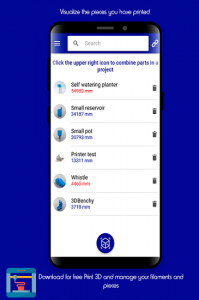 A new app, simply called 3D Print, is now available to download for free on the Google Play Store. The app was published by a maker who goes by paratiDev on Google Play, and was developed to help other makers better manage their filament.
A new app, simply called 3D Print, is now available to download for free on the Google Play Store. The app was published by a maker who goes by paratiDev on Google Play, and was developed to help other makers better manage their filament.
“It has happened to all of us, you want to print a piece and not to know for sure if you have enough filament in the coil to print it. If you have only one coil of that filament, you have only two options; you can use another filament that has more quantity or risk and print it,” paratiDev writes.
“In the first case it forces you to use another filament different from the one you wanted while in the second case you run the risk that there is not enough filament and the piece remains halfway, assuming a loss of money, filament and time.”
The app allows users to visualize how much filament they have left, view the history of 3D printed pieces they’ve made, and can also generate invoices and quotations for 3D prints. The free 3D Print app also allows you to create projects that group together several pieces, and will visualize the wight and total cost of the project.
Formlabs Continues to Grow in APAC Region
 Today, Formlabs announced that its growth in the APAC region is continuing to speed up. The company, which first entered the China market in 2015, is planning to open its new APAC headquarters in Singapore soon, and has also completed a new warehouse in Shenzhen, China for more efficient processing and shipping. While its physical presence in the region is growing, so too is its headcount: Formlabs also announced that David Tan, previously the APAC director of strategy and programs for Oracle Cloud Platform, Alliances & Channels, has been hired on as a new general manager for its own APAC team.
Today, Formlabs announced that its growth in the APAC region is continuing to speed up. The company, which first entered the China market in 2015, is planning to open its new APAC headquarters in Singapore soon, and has also completed a new warehouse in Shenzhen, China for more efficient processing and shipping. While its physical presence in the region is growing, so too is its headcount: Formlabs also announced that David Tan, previously the APAC director of strategy and programs for Oracle Cloud Platform, Alliances & Channels, has been hired on as a new general manager for its own APAC team.
“Formlabs has long set its sights on making 3D printing processes more accessible. Part of this strategy has been completely rethinking 3D printing technologies from the ground up. The second is bringing the technology to market,” explained Max Lobovsky, Co-Founder and CEO of Formlabs. “There is an immense amount of opportunity in Asia Pacific, we’re looking forward to what David and these new locations can do to improve our growing success in the region.”
America Makes Announces Directed Project Opportunities Winners
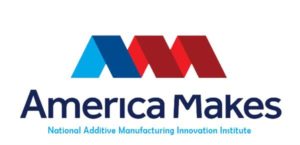 America Makes has announced the award winners of two Directed Project Opportunities, both of which were funded by the Air Force Research Laboratory (AFRL), Materials and Manufacturing Directorate, Manufacturing and Industrial Base Technology Division. The first is the acceleration of large scale additive manufacturing (ALSAM) project, with the objective of getting past the shortcomings of SLM 3D printing, and America Makes awarded $2.1 million to GE Global Research, in conjunction with GE Additive and the Applied Research Laboratory (ARL) at Penn State. With at least $525,000 in matching funds from the team, the total funding for the ALSAM Directed Project to develop an open source, multi-laser manufacturing research platform will be about $2.6 million.
America Makes has announced the award winners of two Directed Project Opportunities, both of which were funded by the Air Force Research Laboratory (AFRL), Materials and Manufacturing Directorate, Manufacturing and Industrial Base Technology Division. The first is the acceleration of large scale additive manufacturing (ALSAM) project, with the objective of getting past the shortcomings of SLM 3D printing, and America Makes awarded $2.1 million to GE Global Research, in conjunction with GE Additive and the Applied Research Laboratory (ARL) at Penn State. With at least $525,000 in matching funds from the team, the total funding for the ALSAM Directed Project to develop an open source, multi-laser manufacturing research platform will be about $2.6 million.
The second is the advancing AM post-processing techniques (AAPT) project, with a goal of improving process control and lowering costs for qualifying complex parts made with SLM technology. The first awardee is Arizona State University, in conjunction with Quintus Technologies, Phoenix Heat Treating, Inc., and Phoenix Analysis & Design Technologies, Inc., and the second is led by the ASTM International AM Center of Excellence collaborative, in conjunction with Quintus Technologies, Carpenter Technologies Corporation, Aerojet Rocketdyne, Rolls Royce Corporation, Honeywell Aerospace, GE Aviation, and Raytheon. America Makes awarded a total of $1.6 million to the two teams, which will also contribute at least $800,000 in matching funds. Both projects are expected to begin next month.
Sinterit Chemist Makes Forbes List of ’25 Under 25′ Poland
 Desktop SLS 3D printer manufacturer Sinterit is proud to announce that its chemist, Paweł Piszko, has been selected by Forbes and the Warsaw office of McKinsey & Company as one of the prestigious “25 Under 25” in Poland. There are five categories in the awards, with five winners in each, and the jury appreciated Piszko’s work on increasing the efficiency of energy collection from renewable sources. When asked by his employers what his goal was, he answered that he wanted to have “an impact on the architecture of society.”
Desktop SLS 3D printer manufacturer Sinterit is proud to announce that its chemist, Paweł Piszko, has been selected by Forbes and the Warsaw office of McKinsey & Company as one of the prestigious “25 Under 25” in Poland. There are five categories in the awards, with five winners in each, and the jury appreciated Piszko’s work on increasing the efficiency of energy collection from renewable sources. When asked by his employers what his goal was, he answered that he wanted to have “an impact on the architecture of society.”
“We are delighted that Paweł chose Sinterit as a place where he can develop his skills and check the results of his scientific activities in practice,” Sinterit wrote in a blog post. “As part of his work, he researches the chemical processes that occur during the sintering of polymers, which allows us to improve the materials that Lisa and Lisa Pro, our flagship SLS 3D printers, print from.”
3DPrint.com congratulates Paweł on this exciting achievement!
Engineer Uses 3D Printed Component to Make Glitter Bomb
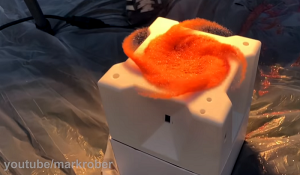 Revenge is a dish best served with glitter and fart spray…at least according to a mechanical engineer and evil genius Mark Rober. He spent nine years working at NASA’s JPL – mostly on the Curiosity Rover – and later founded a company called Digital Dudz. He was upset when someone stole a delivered package right off of his porch, and decided to employ all kinds of technology to take revenge.
Revenge is a dish best served with glitter and fart spray…at least according to a mechanical engineer and evil genius Mark Rober. He spent nine years working at NASA’s JPL – mostly on the Curiosity Rover – and later founded a company called Digital Dudz. He was upset when someone stole a delivered package right off of his porch, and decided to employ all kinds of technology to take revenge.
“I just felt like something needs to be done to take a stand against dishonest punks like this,” Rober said in his YouTube video.
“I spent nine years designing hardware that’s currently roving around on another freaking planet. If anyone was going to make a revenge bait package and over-engineer the crap out of it, it was going to be me.”
Over the course of several months, Rober sketched his idea out, then finished it in CAD before getting to work on the physical prototypes. The package contains a 3D printed component that’s contoured in such a way that four hidden phones inside can capture package thieves opening the box and getting hit with a giant cloud of colorful glitter and continuous blasts of fart spray. Check out his video below to see how things turned out, though be warned that there is some bleeped out profanity. To learn more about the details of his build, check out his friend Sean’s video as well.
Discuss these stories and other 3D printing topics at 3DPrintBoard.com or share your thoughts below.
Arizona State University and PADT Receive Grant to Research Biomimicry and 3D Printing
 Biomimicry is the the practice of basing design off of natural structures, such as honeycombs, for example. It has been used frequently in conjunction with 3D printing, as researchers, designers and engineers take advantage of 3D printing’s ability to create complex structures like those created by nature.
Biomimicry is the the practice of basing design off of natural structures, such as honeycombs, for example. It has been used frequently in conjunction with 3D printing, as researchers, designers and engineers take advantage of 3D printing’s ability to create complex structures like those created by nature.
Arizona State University and Phoenix Analysis and Design Technologies (PADT) are frequent collaborators who have just received a $127,000 Small Business Technology Transfer (STTR) Phase 1 Grant from NASA. The purpose of the grant is to allow the two institutions to further study in biomimicry and 3D printing.
“We’re honored to continue advanced research on biomimicry with our good friends and partners at ASU,” said Rey Chu, Principal and Co-Founder, PADT. “With our combined expertise in 3D printing and computer modeling, we feel that our research will provide a breakthrough in the way that we design objects for NASA, and our broad range of product manufacturing clients.”
PADT recently helped NASA to develop more than 100 parts for the Orion Mission, its manned spaceflight to Mars. NASA applications for this latest grant will include the design and manufacture of high performance materials for use in heat exchangers, lightweight structures and space debris resistant skins. If the first phase is successful, PADT and ASU will be eligible for another, larger grant from NASA.
“New technologies in imaging and manufacturing, including 3D printing, are opening possibilities for mimicking biological structures in a way that has been unprecedented in human history,” said Dhruv Bhate, Associate Professor, Arizona State University. “Our ability to build resilient structures while significantly reducing the weight will benefit product designers and manufacturers who leverage the technology.”
We spoke to Bhate and Eric Miller, Co-Founder and Principal at PADT, for further details about the work that will be taking place under the grant.
What kinds of biological structures are going to be studied under the grant?
“In Phase I, the research is focused on insect nests and the relationship between material and design since the nests are constructed with a range of materials such as bees’ wax, paper and clay. The baseline natural model is the wild honeybee comb, along with nests made by other social insects such as wasps and hornets. These types of structures are perfect for replication with 3D printing because insects build structures in an additive way as well. Many of these shapes can only be created using an additive process, in nature and in industry.”
How has biomimicry been used in industries such as aerospace in the past?
“Hexahedral sandwich panels, which are like a single layer, flat bee-hive structure, have been used in aircraft design for decades. Many aircrafts that are made with carbon fiber composites use flat hex structures to provide light weight strength. With 3D printing, manufacturers can take this proven structure and move beyond flat panels.
A recent example of biomimicry in aerospace was a concept design by Airbus engineers who adapted the venation patterns in the Amazonian water lily to the design of wing spoiler to be 3D printed in metal with the laser power bed fusion process. Airbus has also investigated the use of surface textures that mimic sharkskin to reduce drag.”
What kind of work have ASU and PADT done with biomimicry so far?
“In 2016, PADT won a multi-million-dollar grant from America Makes, a national additive manufacturing innovation institute, to conduct research on lattice structures, a type of structure that has potential to change infrastructure and product development as a whole, especially in aerospace and medical. Part of this research was to develop predictive models for the mechanical behavior of cellular materials including honeycomb structures.
ASU and PADT also published a paper on biomimetic cellular materials at the 2016 Solid Freeform Fabrication Symposium, America’s largest academic conference on Additive Manufacturing.
The STTR grant is the first research grant PADT and ASU have won as a team that directly involves the use of biomimicry in guiding design.”
What industries will be focused on to benefit from the research?
“The aerospace industry is the primary beneficiary from this research. In the aerospace industry, structures need to have certain properties such as strength or insulation, while remaining extremely lightweight.
Moving forward, this work can be applied to the defense industry for armor design, to the biomedical industry for improving implant design, and to consumer applications such as footwear, in which cushioning, and durability is of importance.
The same advantages of biomimicry in the aerospace world – less weight for greater strength in complex shapes – also benefit the automotive industry. As the automotive industry moves to more efficient electric vehicles, structures that use biomimicry will become more prevalent.”
Discuss this and other 3D printing topics at 3DPrintBoard.com or share your thoughts below.



